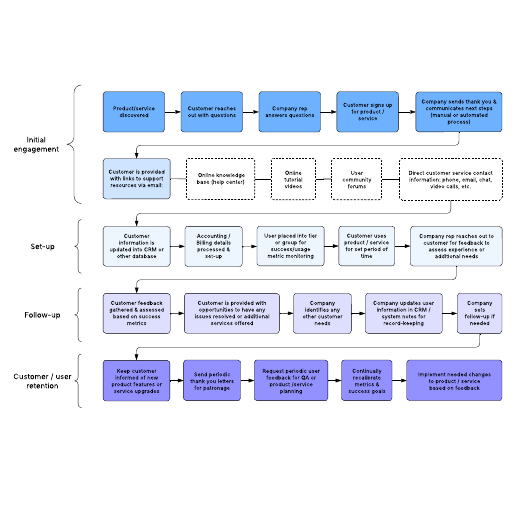Wireframing and flows templates
Create storyboards and all kinds of wireframes: website wireframes, landing page wireframes, and mobile wireframes.
- Template gallery
- Research and design templates
Wireframing and flows templates

New customer or user onboarding example
Used with:

Go to New customer or user onboarding example template
Paid Account
How to use wireframing templates in Lucid
A wireframe is a visual representation of the structure and functionality of a single web page or mobile app. Teams use wireframes early in the development process before visual design and content are added. Wireframes help establish the basic structure of a page and get stakeholder buy-in. Using wireframing templates in Lucid allows hybrid, remote, and in-person teams to ensure a webpage or app is built according to established design goals.
How to get started:
-
Select a template. Lucid offers templates for both free and paid accounts, which are clearly marked. If you already have a Lucid account, you can simply log in and start editing.
-
Sign up for a Free, Individual, or Team account. If you don’t have a Lucid account, you can quickly sign up with your email address. Verify your email, and you’ll be logged in and ready to use your template.
-
Invite collaborators. Share a link to your document with team members.
-
Print, export, or present your document. In addition to being able to print your Lucid document, you can export it using various file formats. You can also build and export a presentation to Google Slides or Microsoft PowerPoint.
Lucid template features allow you to:
-
Create and edit documents. Drag shapes onto the canvas, resize, and easily connect shapes with lines. Customize colors, line styles, fonts, shapes, and create your own shape libraries.
-
Use advanced features. Link shapes to data from Google Sheets, Excel, or CSV files. Add layers to visualizations for multiple levels within your document. Access the document revision history to see changes over time and revert to a previous version if needed.
-
Collaborate in real time. Invite multiple collaborators to create and edit the same document at once. Give real-time feedback with comments and @mentions. Enable collaborator colors to see who contributed what.











